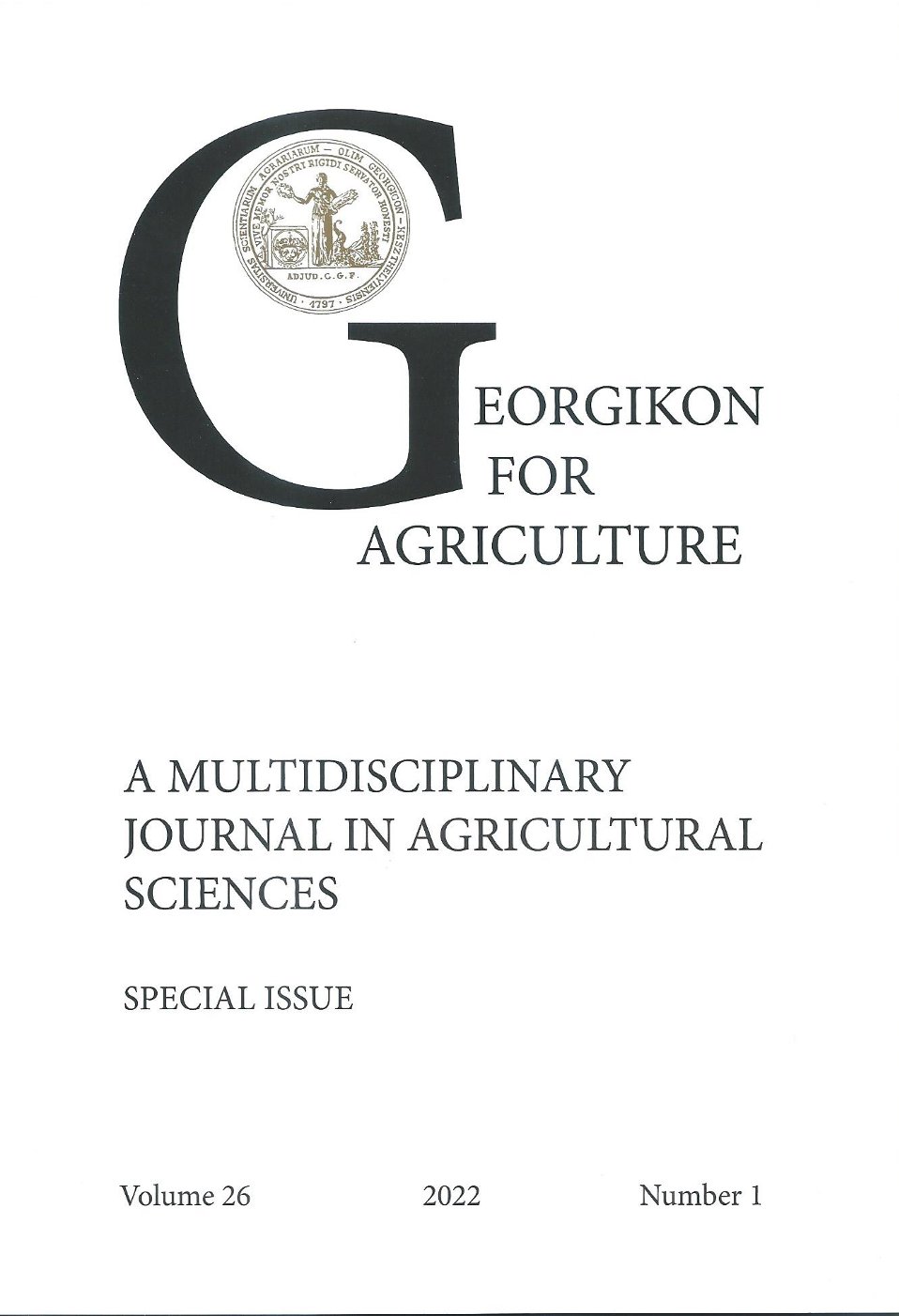Erwinia amylovora baktériumfajra érzékeny és toleráns körtefajták vizsgálata
Keywords:
fire blight, Erwinia amylovora, pear, susceptibility, resistanceAbstract
We studied fire blight susceptibility and resistance on different pear cultivars. During the research we infected two Erwinia amylovora strains on flowers and raw fruits. We developed infections on seven pear cultivar’s flower with capillary technique. We concluded that the ‚Packham Triumph’ cultivar was the most susceptible. The flower organs are really sensitive that is why we could not record moderate resistant cultivar. The ‚Harrow Delicious’ showed the least symptoms throughout the flower infections. During the infection on the eleven pear cultivar’s raw fruits, we concluded that the ‚Worden Seckel‘ showed the most resistance and the ‚Williams’ cultivar was the most susceptible.
References
Bubán T., Orosz-Kovács Zs. és Farkas Á. 2003. Az Erwinia amylovora fertőzés elsődleges helye a virágok nektáriuma. Kertgazdaság. 35. 10-16.
Glits M. és Folk Gy. 2000. Kertészeti növénykórtan. Mezőgazda Kiadó. Budapest, 582.
Soltész M. 1998. Gyümölcsfajta-ismeret és -használat. Mezőgazda kiadó. Budapest, 156-181.
Van der Zwet, T. and Keil, H.M. 1979. Fire Blight - A bacterial disease of Rosaceous plants. Agriculture Handbook 510. US Department of Agriculture, Washington DC, 200.
Vanneste, J. L. (2000) ‘What is fire blight? Who is Erwinia amylovora? How to control it?’, CABI Books. CABI. doi: https://10.1079/9780851992945.0001
Kiss L. 2001. Gyümölcsfajták I. Almatermésűek és bogyósok. Mezőgazda Kiadó. Budapest, 48-65.
Downloads
Published
Issue
Section
License
Copyright (c) 2022 Varga Dorina, Kocsisné Molnár Gitta

This work is licensed under a Creative Commons Attribution-NonCommercial-NoDerivatives 4.0 International License.
Cikkre a Creative Commons 4.0 standard licenc alábbi típusa vonatkozik: CC-BY-NC-ND-4.0. Ennek értelmében a mű szabadon másolható, terjeszthető, bemutatható és előadható, azonban nem használható fel kereskedelmi célokra (NC), továbbá nem módosítható és nem készíthető belőle átdolgozás, származékos mű (ND). A licenc alapján a szerző vagy a jogosult által meghatározott módon fel kell tüntetni a szerző nevét és a szerzői mű címét (BY).




